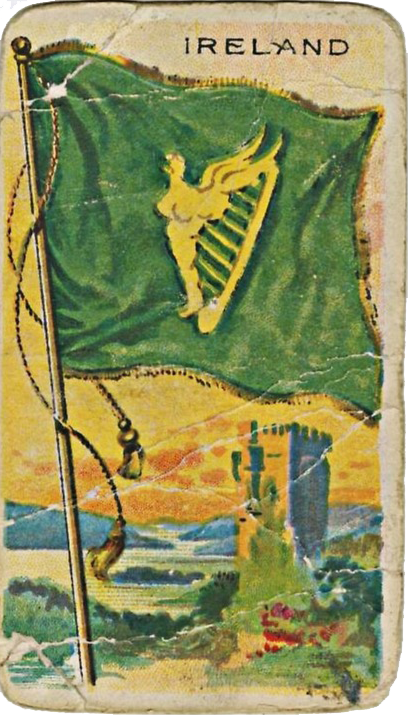
Notes on History
Ireland’s history as a colonial outpost of Great Britain began as early as 1169, when the Catholic Anglo-Normans (English-French) came across the Irish Sea to usurp power from the Irish and take command of their people and resources. Ireland was Britain’s first colony. The British did not want other invaders to take ownership of this strategic island. It would have been too easy to launch warfare on the British island using the numerous short crossings of the Irish Sea, ranging from twelve to fifty miles.
Colonization is an old human story and rarely ends well. This one has left a sad, destructive trail for centuries. History tells us no one likes occupation and domination by a foreign power. Irish history carries centuries of human stories of injustice passed, generation to generation, in legend, song, and myth, like a festering wound never healing, a constant reminder of powerlessness. Thus, the seeds of revolution were sown and had deep roots, like an ancient oak you pass each day, a living reminder of the past. It was only a question of when.
The invasion of Ireland was also a practical matter. England needed more land and subjects to provide tribute, to fill and feed their legions for constant campaigns to gain and defend turf. They saw this as their destiny, a logical and necessary means of taking their place as a world power. The Pope welcomed their conquest, hoping to regain control over corrupt Catholic monasteries, created in the fifth century by St. Patrick, which had become remote, unruly, and unanswerable to Rome.
Ireland was historically fragmented by indigenous kingdoms and clans who were constantly at war for the same spoils sought by the invading Anglo-Normans: land, manpower, and treasure. Blood feuds and tribal antagonisms allowed the Anglo-Normans, over time, to split the Irish ranks and consolidate power. For three hundred years the struggles continued, and in 1537 many, but not all, Irish kings pledged allegiance to the invaders and King Henry VIII.
It was under the Irish kings and the Norman Catholics that the Catholic Church gained enormous importance for the indigenous people. It was the unifying cultural factor for the Irish underclass, who had no means of protection over the circumstances of their lives. The Irish had essentially become slaves in their own country.
By the 1600s Britain had converted to a Protestant nation. For the British to continue control over the Irish Catholics, who were most of the population, harsh penal laws were passed, and the occupying British, referred to as the “Anglo-Irish Ascendancy” or “Protestant Ascendancy,” began the task of enforcing these laws. These laws limited Catholic ownership of land, access to education, voting, and the right to bear arms. By the end of the eighteenth century, Irish Catholic ownership of land was minuscule.
In the early years of the nineteenth century, some of the Anglo-Irish Ascendancy, with roots in Ireland since the time of the Normans, began to recognize the need for reform. The Catholic Emancipation Act of 1829, passed by the British Parliament, allowed a limited number of Irish Catholics to be elected to the British Parliament but also reduced the voting rights for Irish peasants. This continued oppression caused the Irish to clamor for land reform. Some, not all, Anglo-Irish sympathized with the Irish desire for land ownership in their own country.
The Great Famine, the tragedy of the An Gorta Mór, in the 1840s, brought on by a potato blight and compounded by British policies, resulted in extraordinary death tolls among the Irish Catholics, causing large numbers of Irish to emigrate for a better life. The Irish population plummeted by 2.7 million people over the next forty years, down from 6.5 million in 1841 to 3.8 million in 1881.
This was the historical backstory at play in the Irish landscape when my great-great-grandparents, Anglo-Irish Thomas and Sarah Young, teachers and newlyweds, arrived in Dublin in 1837, full of hope and energy to help educate the Irish, start a family, and build a life across the Irish Sea from their family home in Cheltenham, England.
In the late nineteenth and early twentieth centuries, nationalism was on the rise in Ireland and a strange-bedfellow relationship was slowly developing between the Anglo-Irish, who were involved in political and intellectual leadership, and the disenfranchised Irish. Fragmented groups of the Irish were organizing revolutionary cells using guerrilla tactics to destabilize the occupying British military and government. The Irish and sympathetic Anglo-Irish coalesced around the goal, if not the violent methods used by some Irish organizations, of more Irish control over their own lives and eventual Home Rule for Ireland.
The cry for independence was fraught with risk for the Anglo-Irish, who had a privileged life with British protection. Yet living in Ireland, the Youngs and their contemporaries saw, if at a distance, the injustices visited upon the Irish and experienced the stratified society that was sending the youth and promise of both Anglo and Irish families to distant lands for a better life.
Change was coming. The gathering momentum of human suffering was not to be contained; the dam was breaching and promised messy business ahead.
How did Anglo-Irish, like the Young family, respond to the changing world around them? How did it affect their lives and the lives of their families? Did they choose to be observers or participants in a society moving toward change? Our story explores these and many more age-old human questions.
